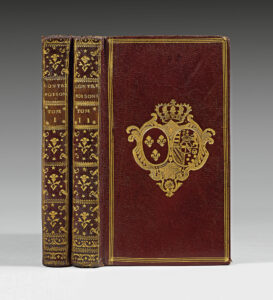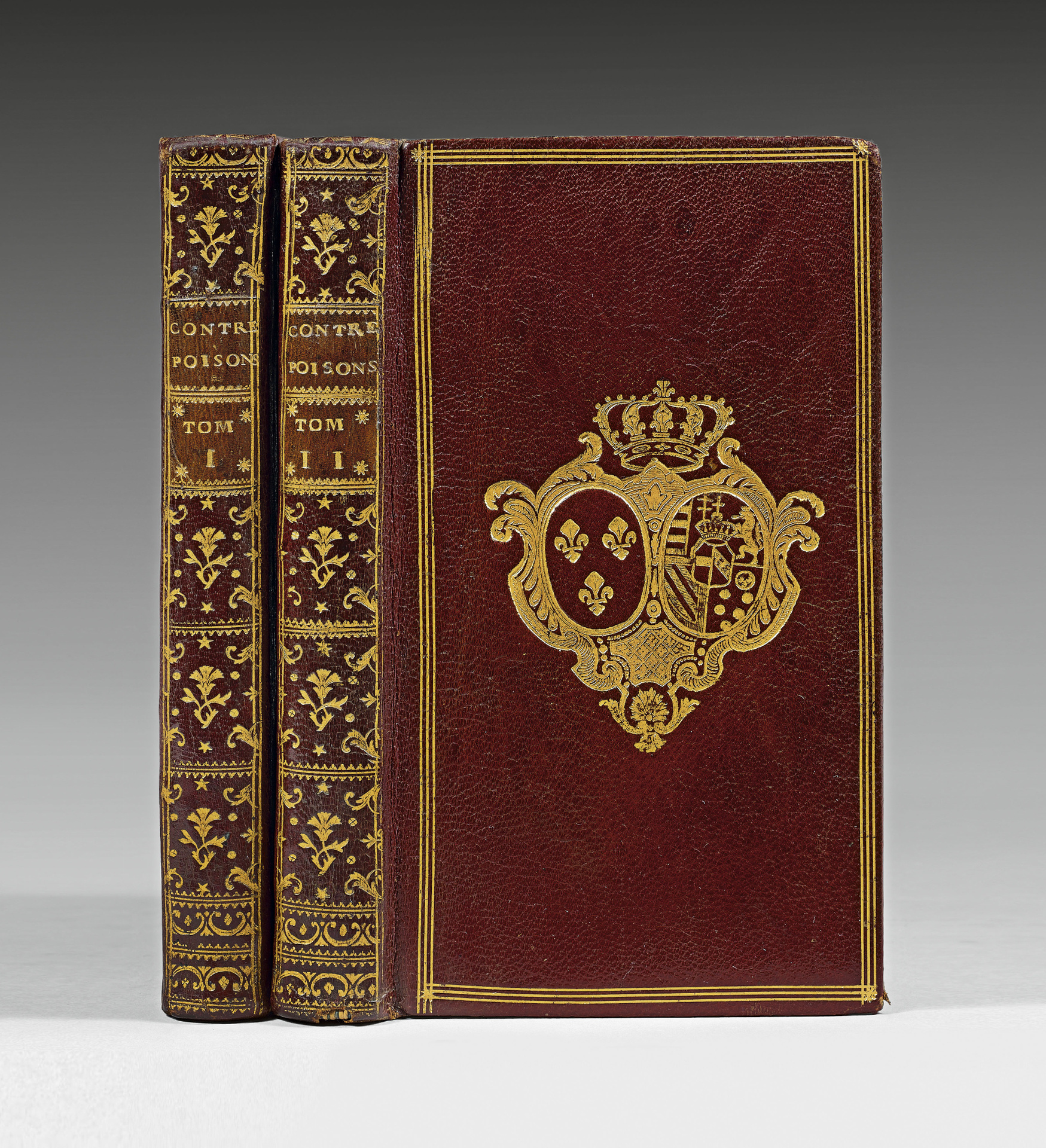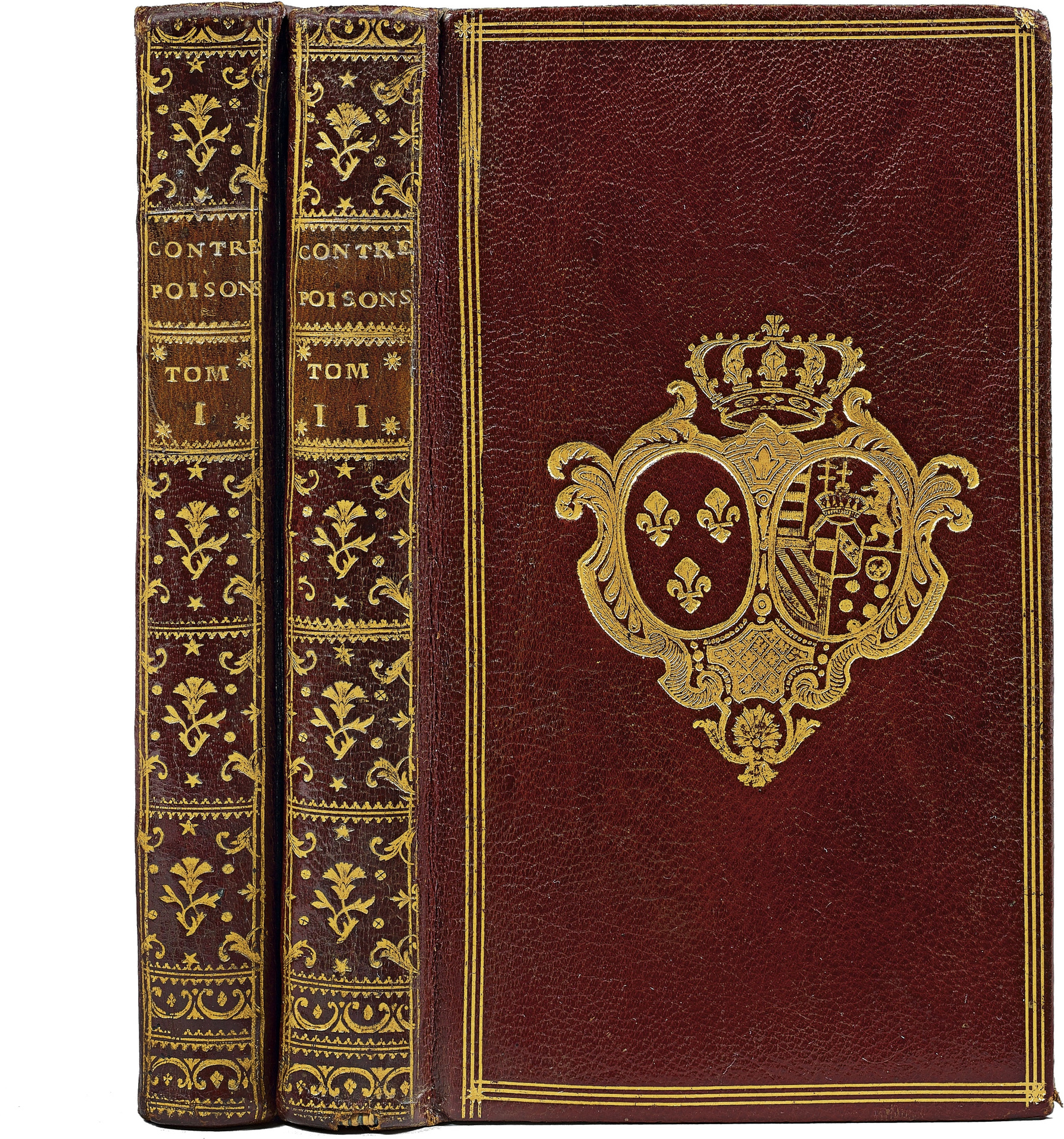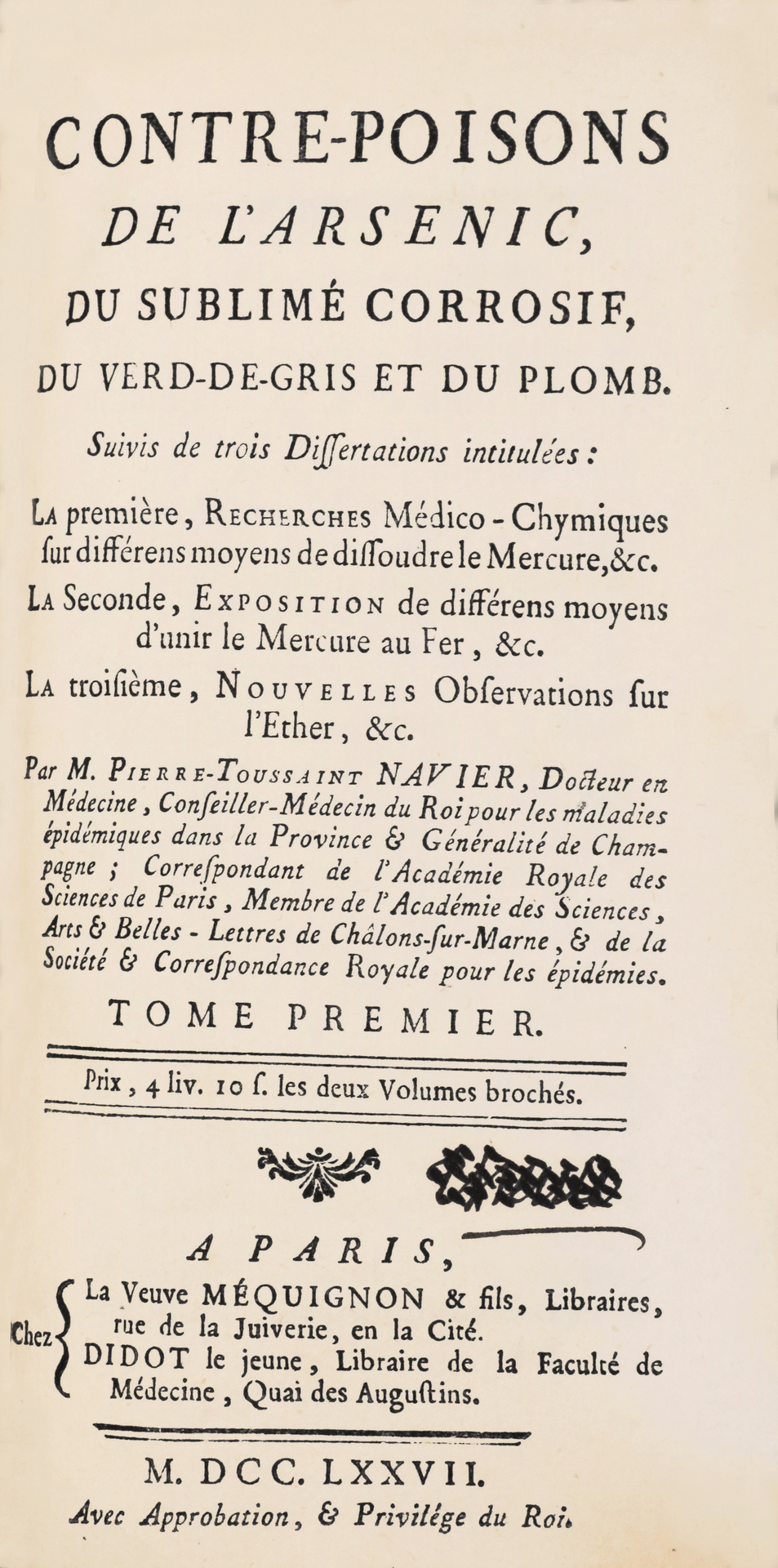Paris, Veuve Méquignon et Didot le Jeune, 1777.
2 parts in 2 volumes 12mo [168 x 96 mm] of: I/ xxv pp., (1) p. of errata, 30 pp., 360 pp.; II/ xxi pp., (1) p. of errata, 389 pp. Full red morocco, triple gilt fillet around the covers, wide gilt arms in the center, decorated flat spines, gilt edges. Tiny tear at the head of a spine. Contemporary binding.
First edition of the most renowned book of doctor Pierre-Toussaint Navier (1712‑1779), the doctor of King Louis XVI.
«This book, drawn in the most profound chemistry, and the result of more than thirty years of study, still has a deserved regard; it was translated into German by C.-E. Weigel, Greifswald ». (C. T-Y).
Pierre-Toussaint Navier, born in St-Dizier on 1 November 1712, became doctor in medicine in Reims in 1741. He chose Châlons-sur-Marne as a place of residence, and soon deserved the title of correspondent of the French Academy of Sciences by a Memoir containing the discovery of nitrous ether. Since then, each year of his life was marked by new memoirs or theses, inserted in the Collections of the French Academy of Sciences of the academy of Châlons, and the Gazette de médecine. Always driven by the love of the public good and the desire to contribute to the progress of sciences and arts, he begins setting them among his new fellow citizens, by constituting, with Dupré d’Ornay and others, the project of a literature society which started its sessions in 1753, and which was established in August 1755 as an academy of sciences, arts and belles-lettres. King Louis XVI gave him a pension in 1779.
« When Mr. Navier published his ‘Treatise on antidotes’, he was already known as a chemist and the Academy of Sciences had included him among his correspondents. In 1741, he had presented this Company a method for the preparation of a variety of ether previously unknown, that he obtained by mixing and by agitating the spirit of wine with nitrous acid. This discovery, which is registered in all the books of chemistry, would have transmitted his name to posterity, even when this science would not have given him other obligations. A new fact is a step further towards the truth and this way, which leads to a lasting renown, was the only one worthy of the scientist’s wishes that we have lost. Reputation never ceased to praise him, although it tends to alternatively succeed eternal silence to short-lived favors. This doctor rather felt an opposite fate. His studies finally drawing attention of the public, he was praised for his works, without prevention or enthusiasm; but his reputation was never equal to his talents, because he had left others raise awareness, and maybe he didn’t know himself what they were worth.
Mr. Navier wasn’t satisfied with having obtained a new variety of ether. Having used in this preparation different nitrous metallic solutions, he had observed that many of these substances remained united and he indicated the ones which didn’t allow this combination. These experiences were judged very favorably by the Academy of sciences.
It brought the same justice to two memoirs by the same author on the different ways to dissolve mercury with vegetal acid and with some neutral salts, and on a new method to make it solvable in water without the help of any kind of acid, with reflections on the advantages medicine can benefit of these preparations.
Having used the method indicated by Homberg, and applied by Boërrhaave, to reduce mercury into thin powder by using long continued movement; Mr. Navier managed to make it solvable in vegetal acid. Ammonia salt and acetous mercurial salt, of which he published the processes, are especially very useful in the practice of medicine. One is softer than panacea; the other is less active than salts of the same nature prepared with mineral acids. When Mr. Navier started his beautiful experiments, their composition was kept secret by Messrs. Keyser and Mollée, who sold them to their profit. Mr. Navier, by making them known, helped them twice; he revealed, by the same operation, two of the most important mysteries of empiricism, and gave to medicine two means of healing that it was missing.
The reunion of iron and mercury had long been the object of the wishes of many chemists. Mr. Navier obtained it by ten different methods, which comes down to mixing together a dissolution of iron and a dissolution of mercury, made one and the other by vinegar or by vitriolic acid. The salt precipitate, composed of these two metallic substances, appears under the form of glowing crystal snow and exteriorly looks like sedative salt.
Another discovery of this academician is the dissolution of mercury in the liver of sulfur that nobody had tried before him, and which gave him a very useful melting remedy in the treatment of scrophuleous diseases and of many skin diseases.
These experiments exposed in this very present work, are accompanied with a great number of new circumstances of clever observations, of interesting details, which reveal the author’s tactfulness and the look that nature only gives to those it wants to reveal some of its secrets. »
Father Rozier, Observations sur la physique sur l’histoire naturelle et sur les arts, 1783, p.15.
The author’s precious copy bearing on each volume the autograph signature of Doctor Navier, offered to Queen Marie-Antoinette and covered with a luxurious contemporary red morocco binding decorated with her wide arms.
Ernest Quentin Bauchart confirms that Queen Marie-Antoinette had, along with the books of the Petit Trianon, an important collection that she had set up in the Château des Tuileries.
The Queen’s books, mostly bound by Blaizot, are for the most part, uniformly bound in red morocco, bearing the arms of France and Austria together, with simple fillets on the covers. The books of lesser importance which filled the bookshelves of the Petit Trianon remained mostly in Versailles. They are modestly bound in porphyry calf, covered with black dots on a dark red background.




